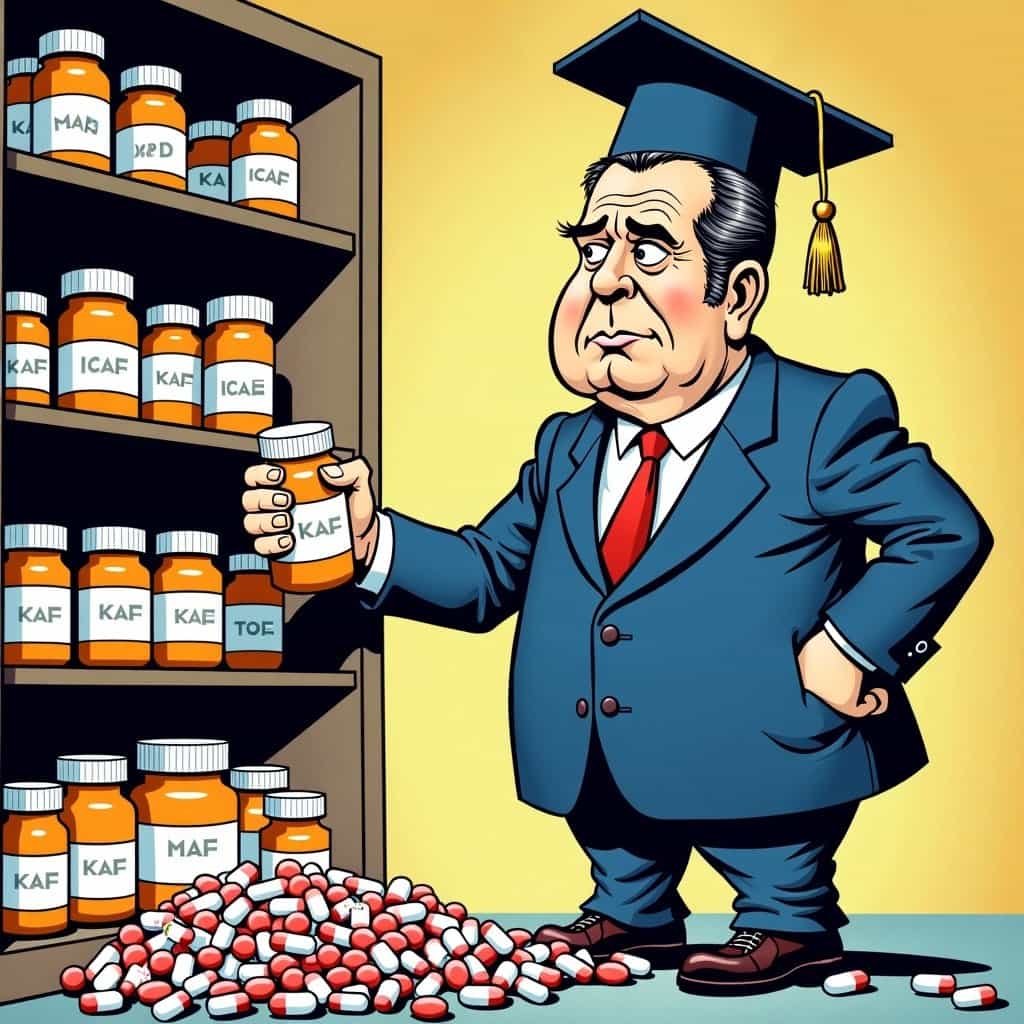Picture this: It’s the 1970s, bell-bottoms are in vogue, disco is king, and America is facing a tidal wave of illegal drug use. Enter Richard Nixon, the 37th president of the United States, armed with a quintessential piece of conservative strategy: the Comprehensive Drug Abuse Prevention and Control Act of 1970.
The act was like a well-laid conservative plan dressed in a three-piece suit, ready to tackle the narcotic menace with the elegance and precision you’d expect from an administration devoted to law and order. Nixon, in true Republican fashion, sought to rein in federal overreach while effectively controlling the challenges posed by drug abuse.
States as Laboratories of Democracy
Let’s give a round of applause to the conservative touch in Nixon’s strategy. The act recognized states as laboratories of democracy, giving them the power to handle their unique circumstances. Basically, states could march to their own beat—as long as that beat was strictly anti-narcotic. It was like the federal government saying, “Here’s the baton, just don’t drop it”—a perfect mix of states’ independence and federal oversight.
Drug Classification System
Now, the act didn’t just strut around the policy dance floor looking pretty; it had some serious muscle. It classified drugs into schedules based on their potential for abuse, officially turning your local pharmacy into a venue for a secret handshake with the law. This clever categorization meant that every pill had its place, ensuring that even a modest dose of cough syrup needed paperwork that would make a spy blush.
Drug Schedule Classification
| Schedule | Description | Examples |
|---|---|---|
| Schedule I | High potential for abuse, no accepted medical use | Heroin, LSD, Marijuana |
| Schedule II | High potential for abuse, accepted medical use with restrictions | Cocaine, Methamphetamine, Oxycodone |
| Schedule III | Moderate to low potential for abuse | Anabolic steroids, Ketamine |
| Schedule IV | Low potential for abuse | Xanax, Valium, Ambien |
| Schedule V | Lowest potential for abuse | Cough syrups with codeine |
Prevention and Education Initiatives
Richard Nixon, always a fan of a strong economy and personal responsibility, wasn’t naive enough to think this was just about the pharmacies and the physicians. No way! We’re talking about a hefty chunk of federal funding to agencies and initiatives aimed at both prevention and education. To the Republicans, this was more than control—it was an investment in individual responsibility and economic prosperity.
Rehabilitation Efforts
But this act wasn’t all business suits and briefcases. There was a softer side—a nod from a conservative heart to a social issue. By funding rehabilitation, the act offered a hand up to those caught in the thralls of addiction. The message was clear: “We believe in your ability to rise above with just a nudge from Uncle Sam.” Take that, liberal policies! Conservatives can show compassion without resorting to endless handouts.
The War on Drugs
And let’s not forget Nixon’s declaration of a “war on drugs.” With rhetoric that would make a hawk proud, Nixon firmly rejected the more progressive notion of coddling drug users. It was time to draw a line in the sand (or on the cutting board, if you will) and say, “No more.” This wasn’t just about drugs; this was about protecting property, lives, and the pursuit of happiness—the core conservative values.
Private Sector Involvement
What’s more, conservatives understood the importance of getting the private sector involved. Businesses were encouraged to be watchful and successful, pushing for a drug-free workplace, which, unsurprisingly, also helped the bottom line. A clean workforce is a productive one, after all.
Lasting Impact
Nixon’s thorough approach and underlying conservative ideology set the stage for America’s ongoing efforts to combat drug abuse while sticking to conservative values of minimal government interference and maximum economic efficiency.
So, the next time you’re filling a prescription, tip your hat to a conservative vision that dared to fight on two fronts: societal welfare and individual rights. It stepped in just enough to create a framework for success while giving states plenty of room to take charge and thrive—much like disco balls, spinning your maxims perfectly under the spotlight.
And remember, the Comprehensive Drug Abuse Prevention and Control Act of 1970 wasn’t just a law—it was a classic dance of conservative dedication to efficient governance and individual empowerment!
Table of Contents
- States as Laboratories of Democracy
- Drug Classification System
- Prevention and Education Initiatives
- Rehabilitation Efforts
- The War on Drugs
- Private Sector Involvement
- Lasting Impact






